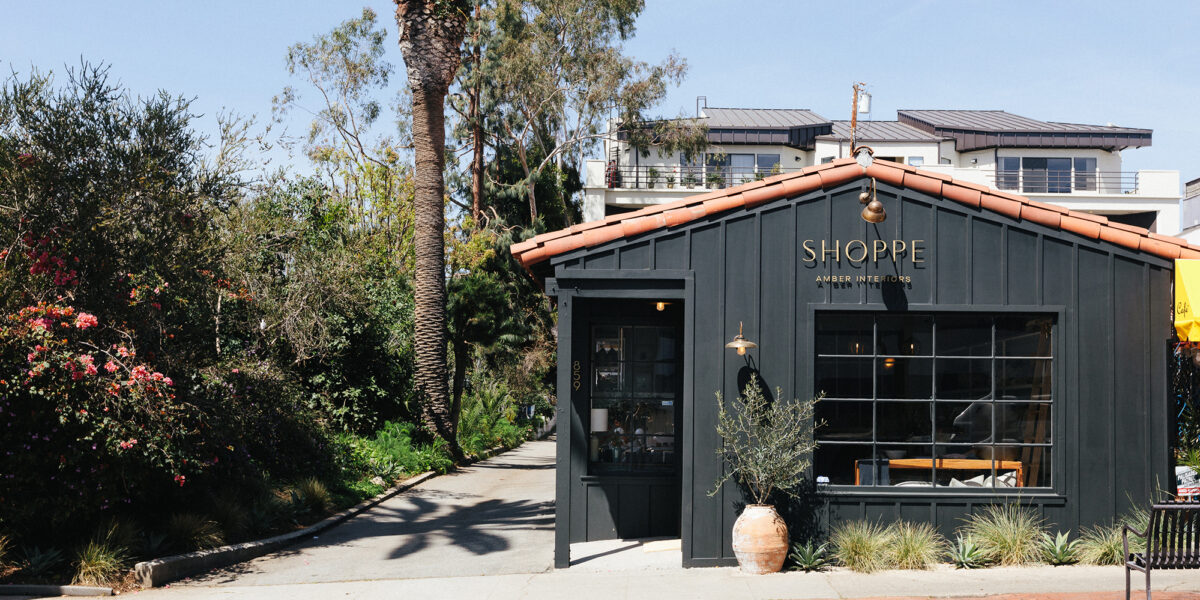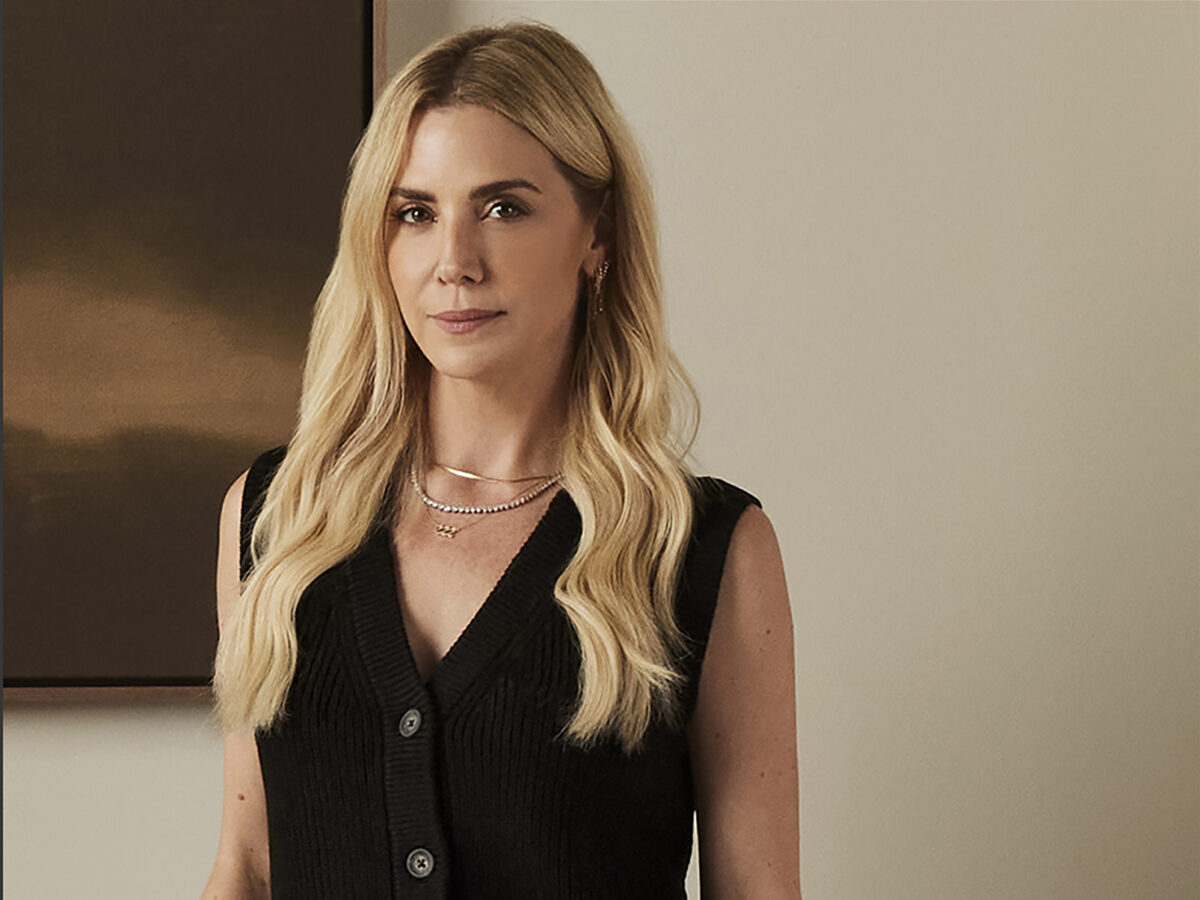Amber Lewis on Rebuilding the California Home
Designer Amber Lewis shares her thoughts on rising to the challenges of rebuilding the California dream home.

Shoppe Amber Interiors' Pacific Palisades location, now sadly lost. Photo by Jess Isaac.
Amber Lewis is an interior designer and author who grew up in Malibu. Known for her laid-back, approachable, and definitively California style, she is the founder of her eponymous firm and owner of Shoppe Amber Interiors, which has an online store and brick-and-mortar boutiques, one of which was lost in the Palisades Fire. She and her team have started a Wildfire Relief Program, offering discounts and services to help people rebuild.

Photo courtesy of @fourhandsfurniture/Photo by Alyssa Kirsten
When I was in high school, there was a terrible fire in 1993. A ton of my friends lost their homes. Then, of course, we had the Woolsey Fire in 2018. And our office is in Calabasas, so unfortunately, wildfires are something I’m used to. You can always tell when a fire is big because of the color and structure. We told everyone to go home because it seemed pretty bad. I remember walking into my house and saying, “I have a really bad feeling about our store.” Everyone was like, “Are you sure? It’s so inland, there’s no way they will let that burn.” But I had a pit in my stomach and just knew. I was watching the news, and that’s how I found out the store had burned. I sent some texts to other business owners and neighbors, like Elyse Walker and Jaimie Geller. It’s like I was almost accidentally breaking the news to them.
As humans, we need food, shelter, and water. When you don’t have shelter, it feels like your survival and stability are gone. Your home is not just the walls around you—it’s your North Star. It’s what makes you feel safe. I’ve always cherished my surroundings. The things that we collect all have some type of meaning to us. Even if it’s a fork, you need it. There are things that you take for granted, and to have them taken away, it’s such an emotional, traumatic event, even if it’s the stuff that you thought didn’t really matter to you. I had a friend and client say, “I lost the blankets that I loved from the Shoppe, and that makes me so sad. I didn’t even think I knew how much I loved them. I just want them back.” It’s things that we take for granted, the things that make us feel safe and loved.
I’m an optimist, 100 percent. Humans are resilient. People survive all kinds of things: death, divorce, disease, devastation. This won’t redefine what the dream home is. I believe that ultimately, if people want it and are not too damaged or too traumatized from what has happened, they will continue to strive for that dream home. If you wanted it from the beginning, fire or no fire, your dream home really is just whatever you wanted, whatever you make of it.
I can only talk about my business and what I lost, so to me, I believe in the community Main Street. I believe in the retail experience. I believe in getting out and shopping and not doing everything online. And I think the same kind of theory can be made for communities and neighborhoods. We have to rebuild, right? We want to raise our children in this city. This is the city we chose. You have to figure out your new beginning, your new starting point, but you’ll never replace the old in the same way. It is going to be about curating things that make you feel comfortable. So if it is a blanket or a book or something else that will make you feel comfortable, I think that’s going to be the number one thing to just at least have as a starting point.
One of the hardest things will be how to re-create all the charm and the character of century-old homes that were lost, like those old, beautiful 1920s Spanish-style homes. How do we as designers avoid creating really soulless, empty boxes in these towns that still have so much character? For my design firm, that’s been something we’ve been focusing on very heavily—re-creating charm, character, and history. We want to rebuild in a way that feels purposeful again because the biggest disservice we could do for our communities is to just create fail-safe, fast-fashion homes that don’t have soul. It’s just going to have to be a very concerted effort to try to get as many people on board with that mentality as possible. If we’re rebuilding in such a tragic loss, the only way that I feel good about doing it is to do it with character and charm and integrity. How we can avoid how fast these fires spread is now always going to be an ask for the design community. There are ways for us to be innovative, use technology to our advantage, and work with architects and professionals to rebuild homes that can stand the test of what will be inevitable in the future. If it’s not five, 10, or 15 years, it’ll be 100 years from now; this will happen again.
I find that people are the most creative and most innovative in their lowest times. When the biggest growth happens, it doesn’t always grow when you’re at your best. Even back in our parents’ and grandparents’ age when the Depression was happening, that’s when a lot of the greatest art and music was created. In tragedy and in the darkest times, some of the brightest moments are made. So I’ve got faith. I’ve got faith in people, and there’s a lot of people wanting to do a lot of good things right now. L.A. can be a very spread-out place, but it’s never felt so small, and it’s never felt more special to be a part of than it has now in the wake of this tragedy. We will rebuild—it won’t be the same, but it will still be special.